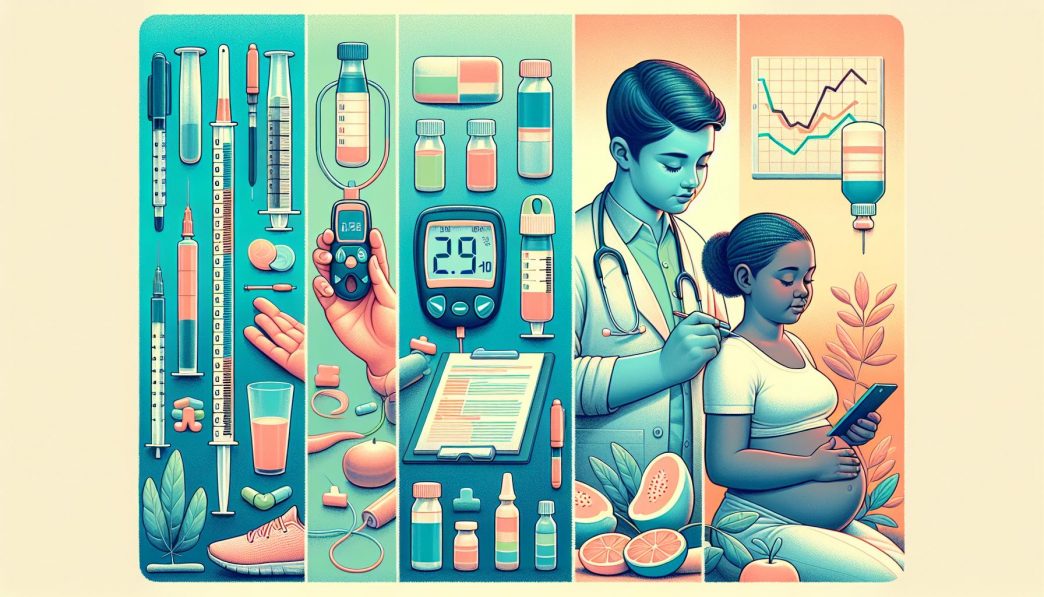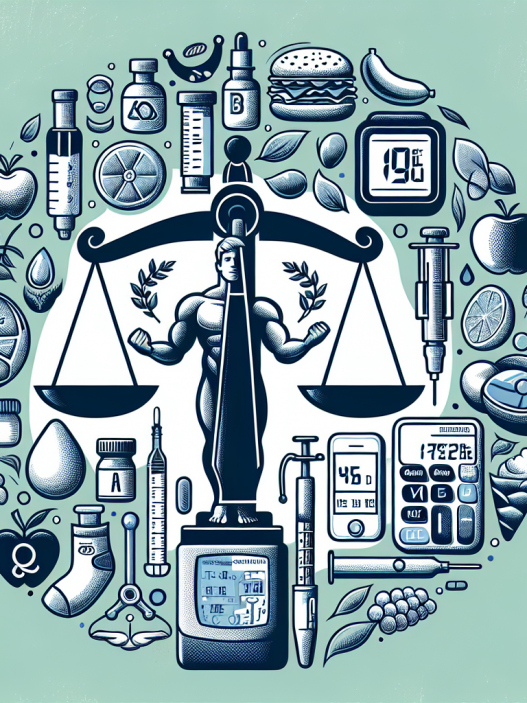# Understanding the Spectrum of Diabetes: Insights into Type 1, Type 2, and Gestational Diabetes
Diabetes is a chronic illness that affects millions of people worldwide, manifesting in various forms, including Type 1, Type 2, and gestational diabetes. Understanding these distinct types is crucial for effective management and prevention. This article delves into the spectrum of diabetes, exploring symptoms, risk factors, treatment options, and lifestyle changes necessary to enhance the quality of life for those affected.
Understanding Type 1 Diabetes: Causes, Symptoms, and Treatments
Type 1 diabetes, often referred to as juvenile diabetes, typically manifests in childhood or early adulthood. This autoimmune condition occurs when the immune system mistakenly attacks the insulin-producing beta cells in the pancreas. Without sufficient insulin, glucose builds up in the bloodstream, leading to high blood sugar levels, which can cause serious health complications.
Individuals with Type 1 diabetes may experience a range of symptoms, including excessive thirst, frequent urination, weight loss, fatigue, and blurred vision. These symptoms can develop rapidly, sometimes within weeks. Managing Type 1 diabetes requires a comprehensive approach that includes regular monitoring of blood glucose levels, insulin therapy, and an emphasis on balanced nutrition tailored to the individual’s lifestyle.
Treatment plans for Type 1 diabetes often involve multiple daily insulin injections or the use of an insulin pump to ensure that insulin levels are adequately maintained. Additionally, a diet rich in nutrients and low in processed sugars helps to manage blood glucose levels more effectively. The importance of education cannot be overstated; individuals must understand how their bodies respond to food, exercise, and illness to maintain optimal health.
Unraveling Type 2 Diabetes: Risk Factors and Management Strategies
Type 2 diabetes is the most prevalent form of diabetes, commonly associated with lifestyle factors and genetic predisposition. Unlike Type 1 diabetes, where insulin production is significantly impaired, the body in Type 2 diabetes becomes resistant to insulin, leading to elevated blood sugar levels. This condition often develops over several years and may go unnoticed until complications arise.
Several risk factors contribute to the onset of Type 2 diabetes, including obesity, lack of physical activity, poor diet, and family history of diabetes. It is crucial for individuals to recognize these risk factors and engage in preventive measures. Simple lifestyle modifications such as incorporating physical activity into daily routines and adhering to a balanced diet can significantly reduce the risk of developing this condition.
Management of Type 2 diabetes often necessitates lifestyle changes, alongside medication. Regular physical activity and a healthy diet play a vital role in improving insulin sensitivity and controlling blood sugar levels. In some cases, oral medications or injectable insulin may be required when lifestyle changes alone are insufficient. Continuous monitoring of blood glucose levels is essential for effective management.
Gestational Diabetes: Understanding Its Implications for Expecting Mothers
Gestational diabetes occurs during pregnancy when a woman’s body cannot produce enough insulin to meet the increased demands, leading to elevated blood sugar levels. It typically develops around the second trimester and can have significant implications for both the mother and the unborn child if not adequately managed.
Women at higher risk for gestational diabetes include those who are overweight, have a family history of diabetes, or have previously given birth to a baby weighing over nine pounds. The symptoms of gestational diabetes may not be obvious, which is why screening is essential around the 24th to 28th week of pregnancy. Regular monitoring and management can help mitigate risks to both the mother and the infant.
Managing gestational diabetes involves dietary modifications, regular physical activity, and close monitoring of blood sugar levels. Women are often required to maintain a consistent meal plan, focusing on whole foods, that includes lean proteins, whole grains, fruits, and vegetables. In some instances, insulin therapy may be needed to control blood sugar levels. Following childbirth, many women experience a return to normal glucose levels, but they remain at increased risk of developing Type 2 diabetes later in life.
Common Complications Associated with Diabetes
Diabetes, regardless of its type, comes with a set of potential complications that can seriously impact an individual’s health. Uncontrolled diabetes can lead to chronic issues, including cardiovascular diseases, nerve damage, kidney failure, and vision impairment. Understanding and recognizing these complications is vital for effective disease management.
One of the most severe risks of diabetes is cardiovascular disease. People with diabetes are more likely to develop heart disease, high blood pressure, and strokes due to elevated blood glucose levels damaging blood vessels and nerves. Engaging in regular cardiovascular exercise, along with dietary modifications, can help manage weight, lower blood pressure, and improve overall heart health.
Another common complication associated with diabetes is neuropathy, or nerve damage, which often affects the feet and can result in loss of sensation, tingling, or pain. Proper foot care is essential to prevent serious infections or injuries that may lead to amputations. Additionally, kidney complications, known as diabetic nephropathy, and eye conditions, such as diabetic retinopathy, are crucial areas of concern. Regular check-ups and adherence to prescribed medications can help mitigate these risks.
Enhancing Quality of Life: Lifestyle Modifications and Support Networks
Managing diabetes effectively requires more than just medical treatment—it requires a holistic approach that incorporates various lifestyle modifications. These changes are pivotal in enhancing the quality of life for affected individuals. A strong support network, including healthcare providers, family, and friends, can provide emotional support and practical assistance, crucial for successful management of the condition.
Adopting a healthy diet is one of the most impactful changes individuals can make. Nutrition guidelines for diabetes focus on consuming nutrient-dense foods low in added sugars and refined carbohydrates. The incorporation of regular meals and snacks can also help maintain stable blood glucose levels. Consulting with a registered dietitian can offer personalized dietary advice tailored to individual needs and preferences.
Physical activity is another critical component in managing diabetes. Regular exercise enhances insulin sensitivity, aids in weight management, and promotes overall health. Aim for at least 150 minutes of moderate-intensity exercise each week, such as brisk walking, swimming, or cycling. Developing a routine that includes both aerobic exercises and strength training can optimize health outcomes.
In addition to diet and exercise, staying informed about diabetes is essential. Educational resources and community support groups can offer valuable information about managing the condition. Online platforms and apps also provide tracking and monitoring tools for blood glucose levels, dietary intake, and physical activity, empowering individuals to take control of their health.
In conclusion, understanding the spectrum of diabetes and its different forms—Type 1, Type 2, and gestational diabetes—is fundamental for effective management and prevention strategies. With awareness of risk factors, lifestyle modifications, and access to support networks, individuals can lead healthy, fulfilling lives despite their diagnosis. Regular communication with healthcare providers ensures ongoing support and adjustments to management strategies, ultimately fostering a proactive approach to living with diabetes.






















